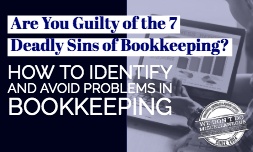What is a Credit Memo?
Short for "credit memorandum" and also known as a credit note, a credit memo is a document that reduces a customer's or client's total account balance. Credit memos may be applied to future purchases of goods or services.
Unlike a refund, a credit memo does not remit money to the customer. While credit memos can be issued in conjunction with refunds depending on the incident, issuing a credit memo alone does not automatically entail sending the customer's money back.
Credit memos can be internal or external. External credit memos are sent to the buyer, informing them that they have a credit on their account, while internal credit memos are for account management purposes only and the buyer is not notified that they have a credit. Depending on the amount and how much goods or services the buyer plans to purchase, credit memos can reduce or eliminate the amount of their next purchase.
Information Typically Recorded on Credit Memos
While there is no uniform process for credit memos as different sales and account management systems have differences in how they are processed, credit memos will often contain the following information.
Information about the customer that is kept in customer relationship management (CRM) software such as their name and shipping address, billing address, preferred modes of payment, and customer account number may be on the credit memo so the record is easier to find for future transactions. If the company has a loyalty program in place, the loyalty account number may also be included. In cases where CRM solutions are not integrated with the company's accounting software, having as much information as possible about the buyer and their account details is important for accurately expediting credit memo remittance between the two programs.
The credit memo is likely to contain information about the purchase itself. Purchase order and invoice numbers should be included to provide as much context as possible for why the credit memo was issued, and facilitate updating the credit memo once the buyer uses it on a future purchase. The terms of the transaction should also be on the credit memo, such as net 30 but the customer is rewarded by paying within 15 days or less.
The purchase date helps contextualize the transaction and including item numbers or SKUs, product name or service description, prices paid, and quantities ordered should also be included on the credit memo.
The reason why the credit memo was issued to the buyer is also apt to be included with other transactional information.
Why Would a Merchant Issue a Credit Memo?
Credit memos are issued to buyers, and accepted by the buyer in place of a refund, for several reasons. Some retailers have a "no refund" policy and the buyer places an order fully aware of this. If they receive a defective product or items that are significantly different or in the wrong quantity, the seller may waive this policy and process a refund or issue a credit memo based on the purchase price.
If the seller does offer refunds routinely, credit memos may be issued in similar situations or because the buyer has been a customer for a long time and the company wants to appease them after a less optimal transaction. If a buyer buys an item right before it goes on markdown, the seller may issue a credit memo for the difference to entice future purchases. Internal credit memos may be used to offset future purchases from the customer, but also to write down currently outstanding balances, such as a store credit card or merchant credit agreement.
Why It Is Important to Review Credit Memos
At the end of the month, quarter, and year, the seller should review all outstanding credit memos and how they align with accounts receivable. If a top-down view is possible based on how CRM integrates with the accounting software, an aggregate dollar amount of these outstanding credit memos can help determine whether payments to vendors can be reduced as a result.
Correctly accounting for credit memos can also present the total receivables balance more accurately. If the company uses a factoring service to free up working capital or help fund expansions and other major purchases, accounts receivable serves as the primary collateral for this type of capital. Having a more accurate count of credit memos can provide more insight about the company's operations to the factoring company, and other external users such as banks, and help them properly assess how much capital they can offer.
Request a demo below to see how AccountingDepartment.com can assist you in putting your credit memos where they belong!














